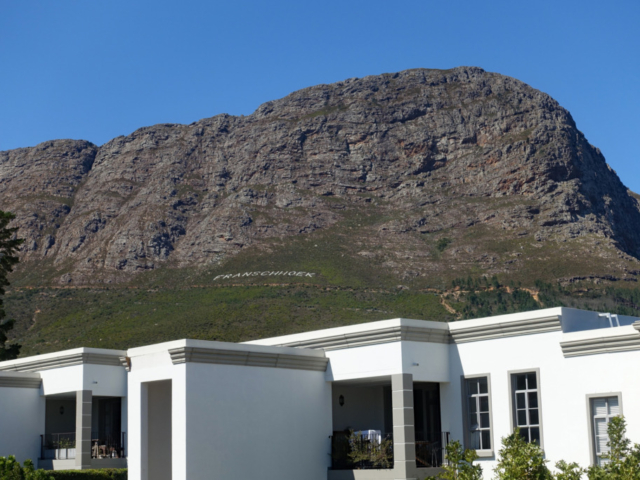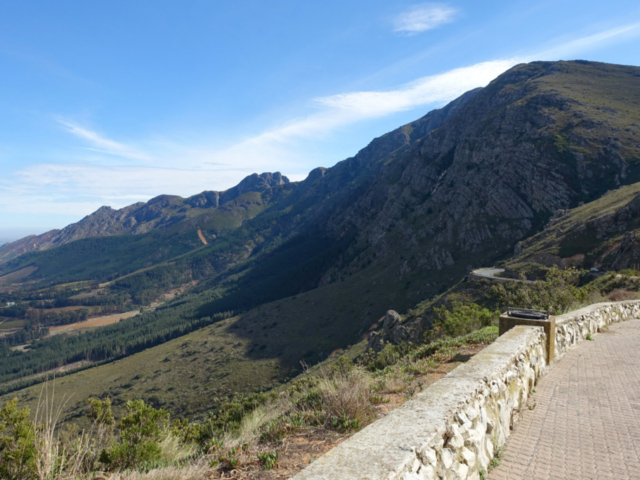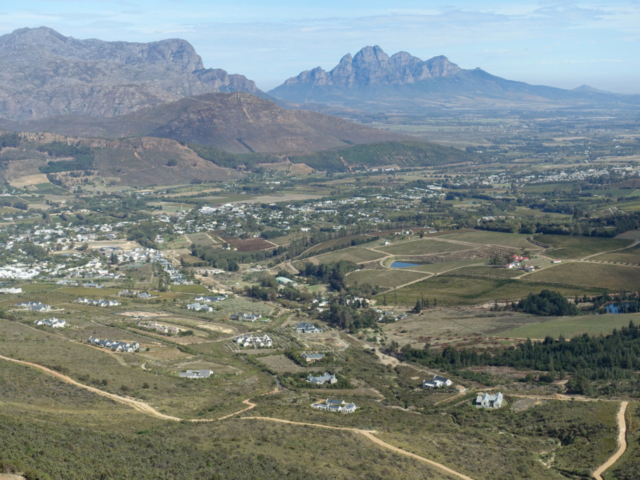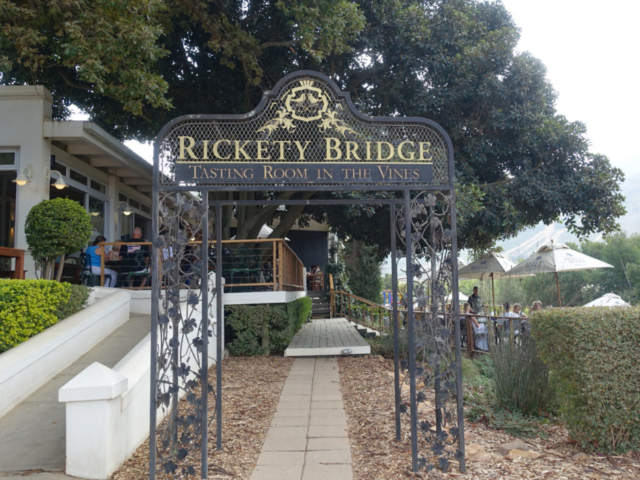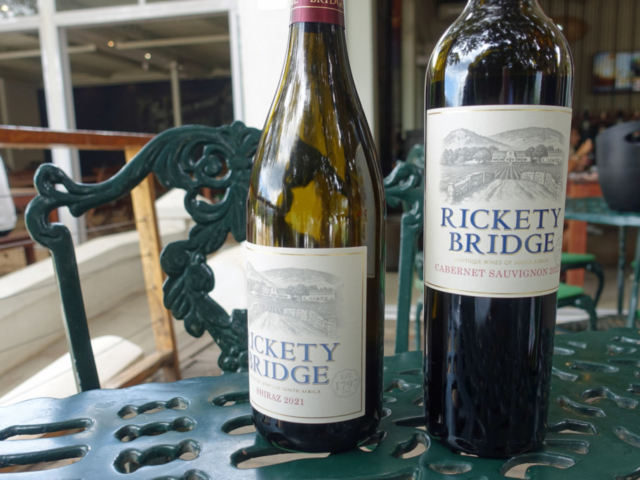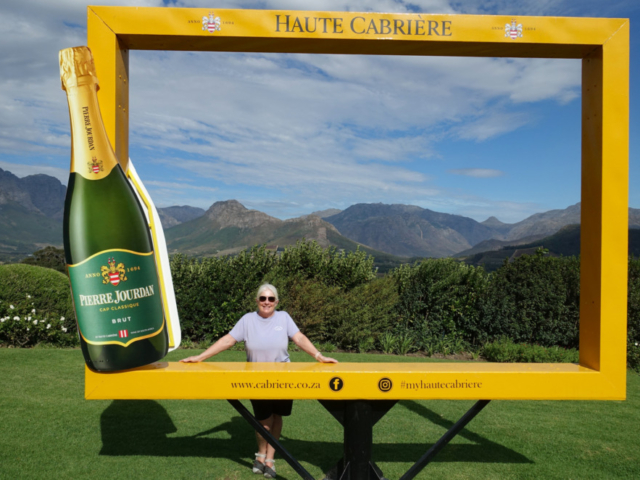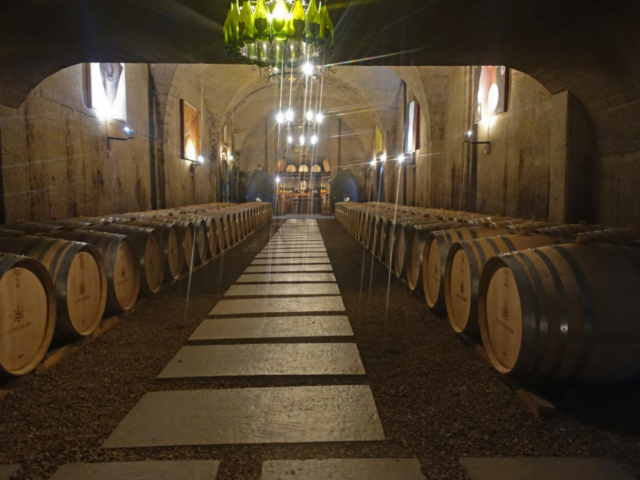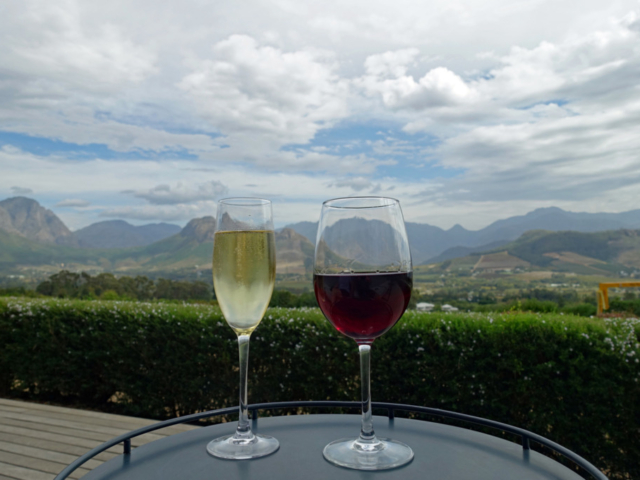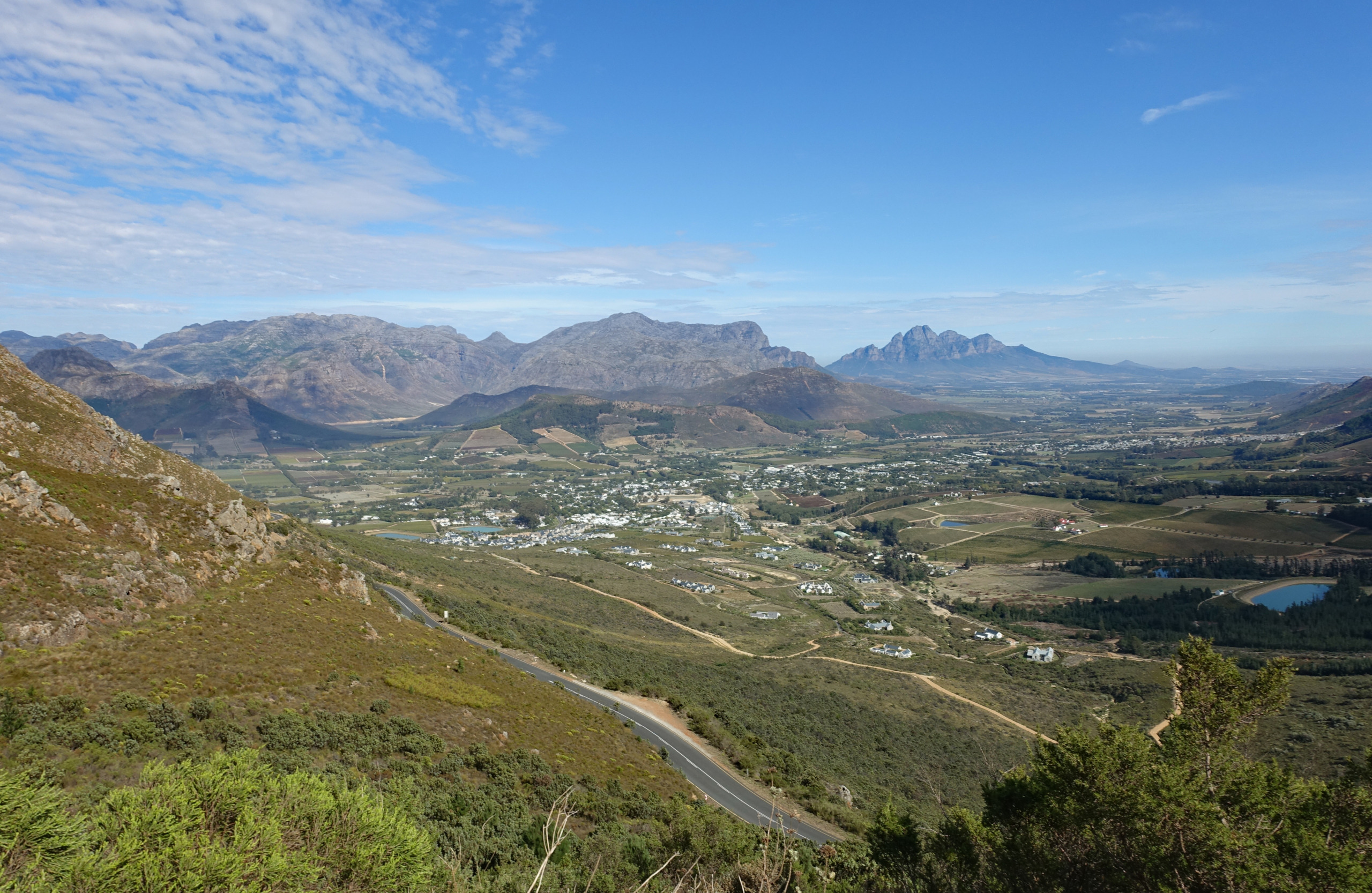
Franschhoek is Afrikaans for ‘French Corner’ and is one of the oldest towns in South Africa. In the late 17th century French Huguenots, a religious group of French Protestants, were forced to flee from persecution in their Catholic-ruled country. In 1688 almost 300 Huguenots arrived at the Cape of Good Hope. They were given the Franschhoek Valley to settle, establishing farms and businesses, bringing their French culture and experience in viniculture to South Africa. Many of these farms have grown into renowned wine estates, many of them with French names. The Cape Dutch architecture in much of the village is unspoiled, as restrictions have been placed on the extent of renovations and new construction in order to preserve the spirit of the original French settlers.
Once a quiet country retreat, the village and region began experiencing a boom in the 1990s, and property prices increased. The ideal weather and proximity to Cape Town has turned Franschhoek into one of South Africa’s most sought after residential addresses. Franschhoek is notable for having some of the top restaurants in the country and together with the strong wine culture this has made Franschhoek into what many describe as the ‘food and wine capital’ of South Africa.
We spent two days in Franschhoek and unfortunately it poured rain on the second day so our sightseeing was limited to one day. Wine tourism is big business here, and the promotion of their ‘wine tram’ makes it a very busy little town, although I suspect it’s much busier here in the summer months. We decided to forego the wine tram on the advice of a fellow traveler who said it involved a lot of sitting around waiting for the tram and the shuttle buses to each winery.
The morning of our first day in Franschhoek started off with sunny skies so we decided to make a trip up to the Franschhoek Pass Lookout. The road climbs steeply out of town along the northern edge of the Franschhoek Mountains to a stunning viewpoint showcasing the mountains and the town nestled in the valley below.
Just at the edge of town is the pretty Huguenot Monument, completed in 1945 and dedicated to the cultural influences that the Huguenot’s brought to this region, and South Africa in general.
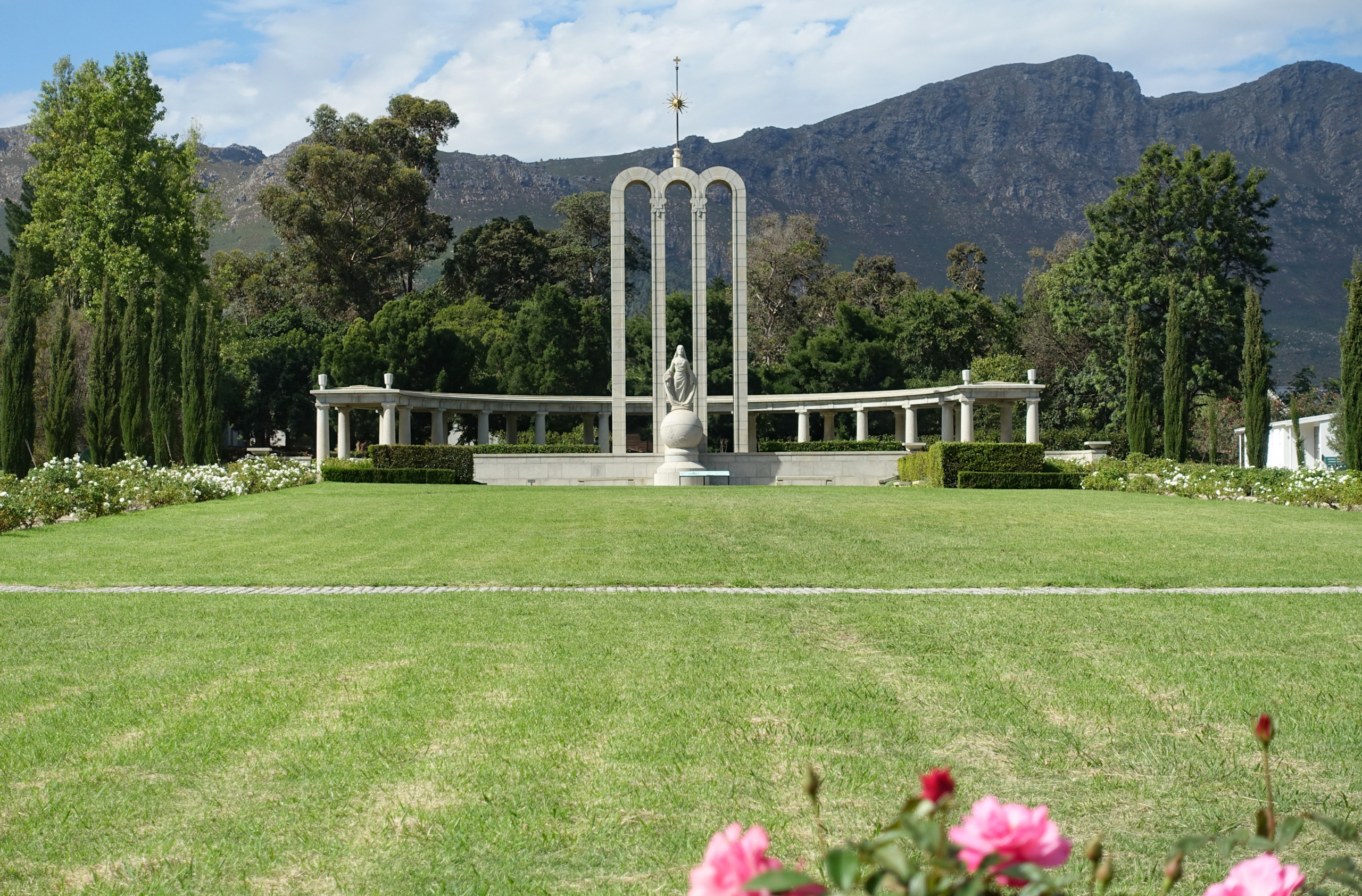
On the main street through town is the The Franschhoek Dutch Reform Church. The church was built in 1847 and has a small museum corner detailing the history of the Huguenot’s and the church.
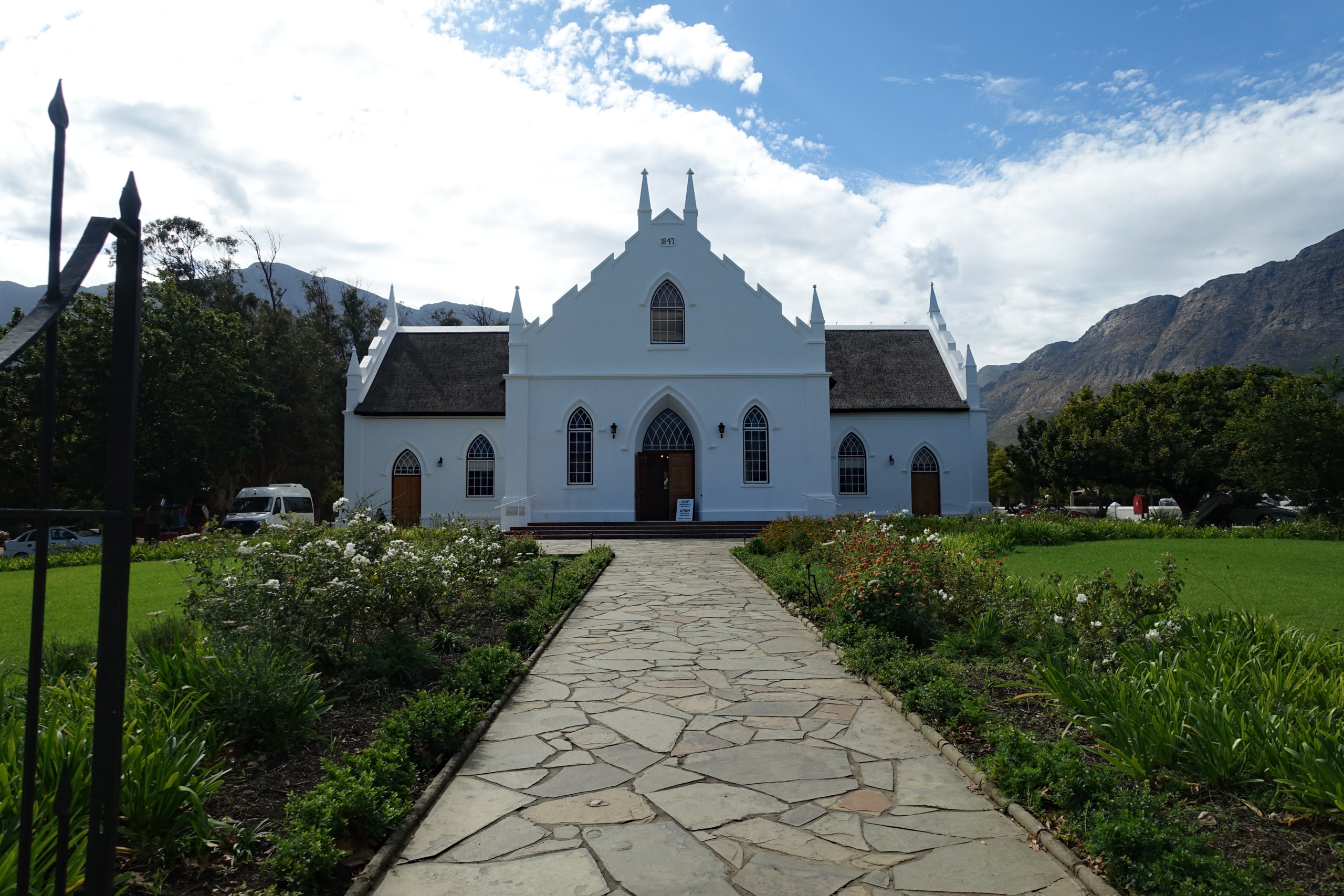
Of the many vineyards to choose from we picked Rickety Bridge Estate, because I liked the name. Originally part of the La Provence farm, the land was given to French Huguenot farmers in 1694. It wasn’t until around 1830 that 40,000 vines were planted and the wine estate came into being. The estate became known as Rickety Bridge in the late 1980’s due to the old railway bridge that crossed the Franschhoek River and provided access to the property. We relaxed on the terrace, had lunch and enjoyed a wine tasting with breathtaking views of the vineyards and mountains. Their Estate wine tasting cost 115 Rand (USD $6.40) each and we could select five wines from a list of eleven, which was perfect so we could focus on their red wines.
Our second estate visit was Haute Cabriere, also started over 300 years ago by the Huguenot settlers. The estate is located on the hillsides below the Franschhoek Pass and offers sweeping views of the valley and surrounding mountains. Their wine tasting experience is located in the cellar but it was such a beautiful day we chose to sit outside with a glass of wine and enjoy the views instead.
After listening to thunderstorms all night, our second day in Franschhoek was pretty wet and laid back. Blair found a gym for us to spend some time at in the morning before we went to Yama Asian Eatery for lunch. I mentioned earlier that Franschhoek is renowned for it’s foodie scene and I have to say, Yama was incredible. Delicious sushi and to die for soft shelled crab, yummy!!!
Sadly that’s all we got up to during our two day visit to Franschhoek. It’s a great little town with a lot of wine estates, fantastic restaurants, a Belgian chocolate factory, art galleries and lots of cute little clothing and souvenir shops along main street. Definitely worth a visit if you are passing through South Africa.
From here we’re off on a 16 day road trip along the southern coast of South Africa…..
